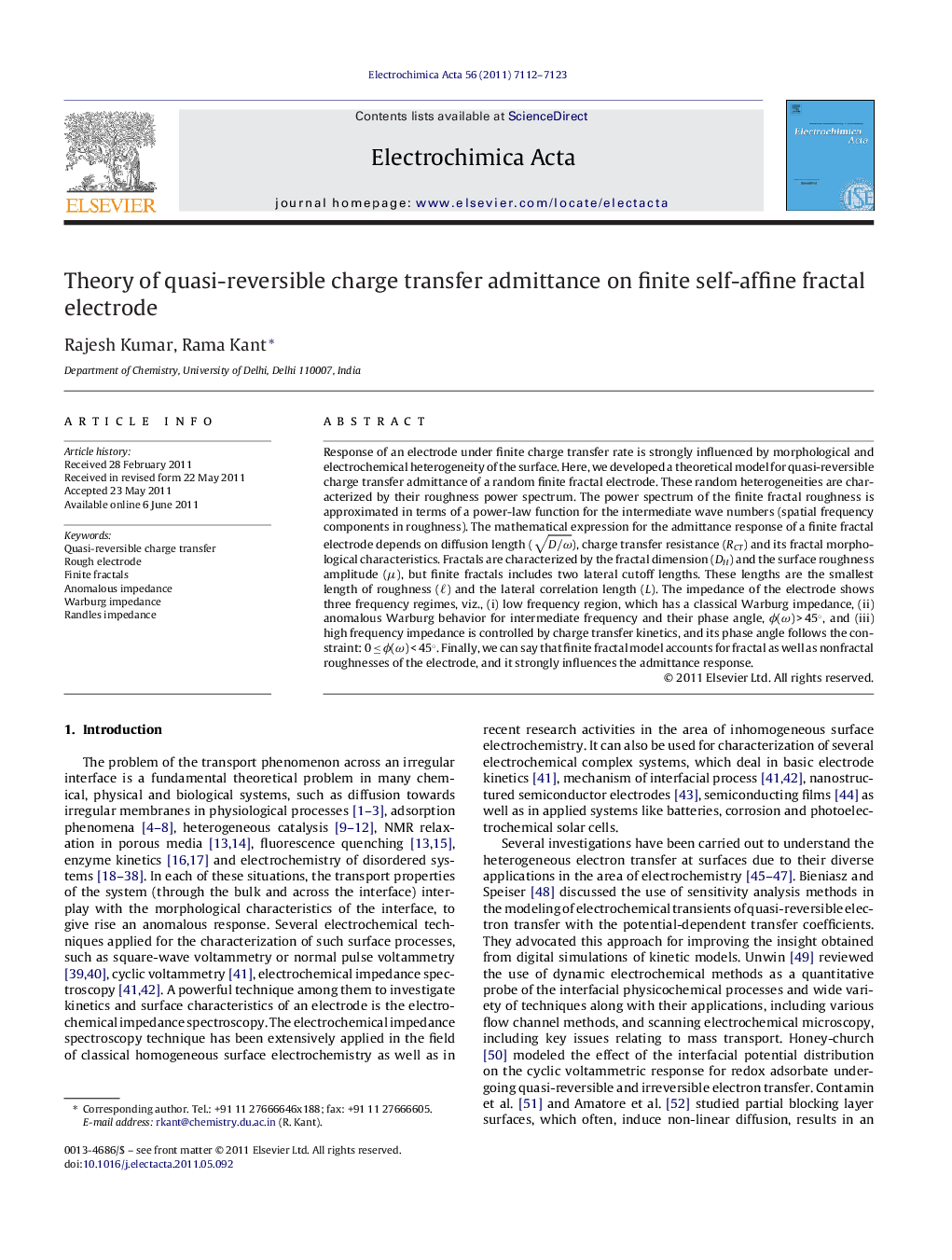| Article ID | Journal | Published Year | Pages | File Type |
|---|---|---|---|---|
| 191042 | Electrochimica Acta | 2011 | 12 Pages |
Response of an electrode under finite charge transfer rate is strongly influenced by morphological and electrochemical heterogeneity of the surface. Here, we developed a theoretical model for quasi-reversible charge transfer admittance of a random finite fractal electrode. These random heterogeneities are characterized by their roughness power spectrum. The power spectrum of the finite fractal roughness is approximated in terms of a power-law function for the intermediate wave numbers (spatial frequency components in roughness). The mathematical expression for the admittance response of a finite fractal electrode depends on diffusion length (D/ω), charge transfer resistance (RCT) and its fractal morphological characteristics. Fractals are characterized by the fractal dimension (DH) and the surface roughness amplitude (μ ), but finite fractals includes two lateral cutoff lengths. These lengths are the smallest length of roughness (ℓ)(ℓ) and the lateral correlation length (L). The impedance of the electrode shows three frequency regimes, viz., (i) low frequency region, which has a classical Warburg impedance, (ii) anomalous Warburg behavior for intermediate frequency and their phase angle, ϕ(ω) > 45°, and (iii) high frequency impedance is controlled by charge transfer kinetics, and its phase angle follows the constraint: 0 ≤ ϕ(ω) < 45°. Finally, we can say that finite fractal model accounts for fractal as well as nonfractal roughnesses of the electrode, and it strongly influences the admittance response.
► Quasi-reversible charge transfer admittance equation is obtained for finite fractals. ► Finite fractals are characterized with two lateral cutoff lengths in the power spectrum. ► Admittance response is enhanced for the finite fractal and nonfractal roughness. ► Classical Warburg, anomalous Warburg and charge transfer regimes are identified. ► Phase angle and impedance response differentiate three regimes.
